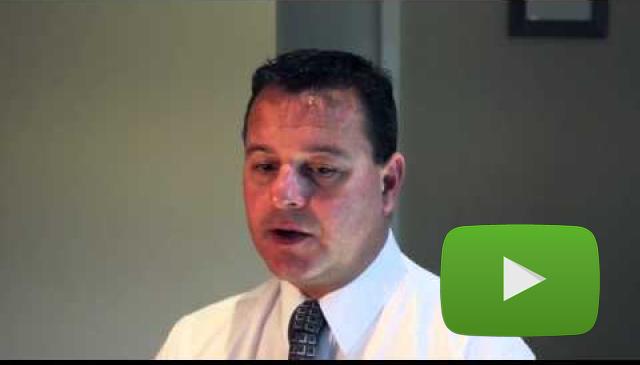HOTS Business Simulation (La Trobe University)
Educator
Paul Strickland | La Trobe University | P.Strickland@latrobe.edu.au
Key Features
- Simulator: HOTS
- Students: Undergraduate, internal students
- Class Size: 80+
- Assessment: Business plan (formative), team meetings (10%), business performance (10%), presentation (10%), team performance report (10%), reflective report (60%)
- Pedagogy: Intensive delivery of lectures in first half of semester (6 x 2 hour lectures/seminars; 10 x 2 hour tutorials)
Background
As part of the Bachelor of Tourism and Hospitality Management undergraduate program, the use of the HOTS Management Simulation is incorporated into a unit titled Hospitality Services Delivery which is the capstone unit for this degree.
HOTS is a computer-based simulation in which teams operate a service business (a hotel) in a dynamic and competitive environment, making decisions in accelerated real-time and analysing results from comprehensive management reports and market feedback (HOTS website, 2014, http://www.hots-simulation.com/features.html).
Using an interactive simulation is an ideal way for students to learn the graduate outcomes associated with the course which include communication and team work, problem solving skills, analysing data, report writing and individual reflection. Students have the opportunity to draw on all their skills and knowledge that they have accumulated over the three years and incorporate them into the simulation itself and assessment tasks.
Learning Aims
The aims and objectives is for students to make business decisions in a team environment, implement a comprehensive marketing strategy and interpret financial data and respond to market forces and hotel competition. Through assessment tasks, students should be able to demonstrate leadership qualities and draw on previous learning and experience that reflects the goals of individual business plans.
Pedagogy
HOTS is an extremely flexible tool in the way it can be delivered. At LTU, the current way of conducting the unit is:
- 6 x 2 hour lectures/seminars (2 per week for 6 weeks): During this time, the dissemination of compulsory information is given such as HOTS background documents, organizing students into teams, group discussions and creation of business plans. These seminars are supported by an online Learning Management System (LMS) and Echo 360 that captures all lecture content that can be viewed at the student’s convenience on any device that has internet access.
- 10 x 2 hour simulation/tutorials: The simulation requires access to computers to conduct the simulation. LTU has set up 8 teams (8 hotels) in each tutorial with 3-5 students in each team. Students undertake two practice sessions, then five weeks of inputting decisions into the computer system competing against each other. The final three weeks are for team meetings and for working on assessment tasks.
‘Students tend to come to all seminars and tutorials as these times are already scheduled. ‘If they require additional time it is usually directly before or after the simulation’ says Paul.
Assessment
The assessment tasks include a 2-3 page business plan prior to the start of the simulation that identifies the team’s objectives, S.W.O.T. and P.E.S.T.E.L. analysis, simulation participation and team meetings weighted at 10% each. This allows for feedback both at the beginning and throughout the simulation itself.
| Assessment | Responsibility | Weight |
|---|---|---|
| Business Plan | Team | Formative |
| Team Meetings/attendance | Team | 10% |
| Business Performance | Team | 10% |
| Team Presentation | Team | 10% |
| Team Performance Report | Team | 10% |
| Reflective Report | Individual | 60% |
At the completion of the simulation, teams must present a 15 minute oral presentation and a 2,000 word group report based on the financial data and original team objectives, worth 20% combined. Finally, an individual report makes up the balance of assessment weighting that allows students to agree with or deviate from the managerial decisions throughout the simulation. All written tasks are graded and returned to the students at the end of the unit. Paul stated:
Student feedback indicated that the final result should be based mostly on individual work therefore the final report is worth 60%. This encourages all students to have a comprehensive understanding of all aspects of the simulation, which is reflective in their overall result. This seems to overcome the problem of individuals being ‘carried’ by other team members.
Resourcing
The HOTS simulation requires the initial instalment which is the largest cost. In the last seven years that the HOTS simulation has been operating at LTU, it has been upgraded only once with an annual support fee for both the IT department and the simulation facilitator. The department of Marketing, Tourism and Hospitality pays for the on-going costs as the unit is embedded in the hospitality program. Additional resources include staff wages for the lecturers and tutors or simulation facilitators. LMS and Echo360 are supported by the IT department. Additional readings are generally sourced from the HOTS handbook and the campus library however students are encouraged to research widely and incorporate theories such as Porter’s Five Forces (1979).
Outcomes
‘Students generally complete the simulation with an understanding of how all previous units and content come together in a practical way’ says Paul. He mentions that students are more confident in making decisions in a group environment and working with others even though they may not agree with every aspect. Students have the ability to use the tutor’s comments from the group and individual assignments to showcase their skills for future employment.

